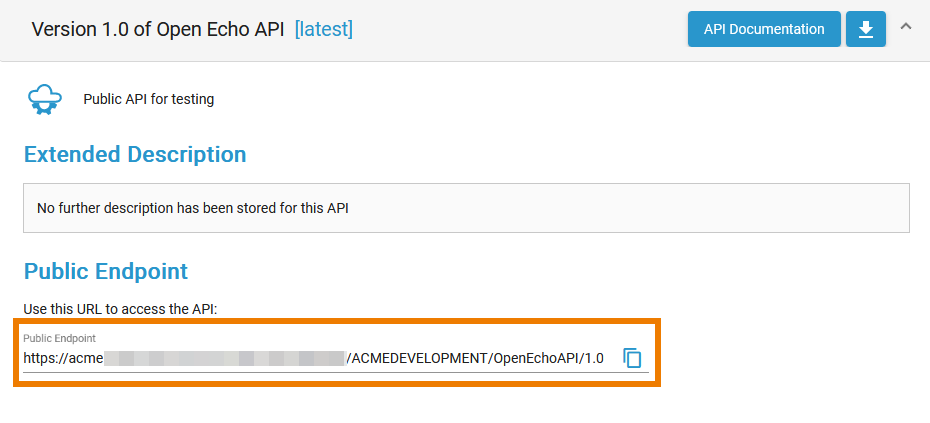Page History
Public vs Private API: An Overview
Public APIs
Public APIs are accessible to everyone.
Therefore, public APIs are best suited if you want to make your API accessible to everyone.
| Info |
|---|
Public APIs do not require an API Key in order to be called. You can find the public endpoint for the API displayed:
|
Advantages of Public APIs
- It is very easy to consume a public API - you just need to know its public endpoint.
- Clients do not need to register for a public API: Neither a client nor a contract are necessary.
- Compared to a private API, a public API requires less configuration.
Disadvantages of Public APIs
- You have no control over the users of your API (unless the API is further restricted by policies).
- Since a private API is publicly accessible, there is a higher risk of misuse.
- Regarding the available metrics, you cannot distinguish who the caller of your API was.
Common Use Cases for Public APIs
You should use public APIs...
- ... if you want to provide your API to everyone.
- ... if you want to enable internal access without (too many) restrictions.
Private APIs
Private APIs need a contract to be used by clients.
They are best when you want to limit access to the API by selected users and customers.
| Info |
|---|
Private APIs require an API Key in order to be called. You can find the API Key displayed:
|
Advantages of Private APIs
- Access to private APIs can be controlled in a very fine-grained manner, e.g. per approval workflow (refer to Handling Approval Requests for details).
- Different access levels can be mapped by assigning restricted usage plans to your API.
- You have insight into various metrics that can be displayed per client (refer to Metrics for details).
- In addition to the policies assigned to the API, you can also assign policies to each client (refer to Policies > Policy Chain for details). This enables further changes or restrictions, e.g. different authentication methods for customers.
Disadvantages of Private APIs
- To consume a private API, a client and a contract must be created.
- Compared to a public API, a private API requires more complex configuration.
Common Use Cases for Private APIs
You should use private APIs...
- ... if you want to grant access to selected customers.
- ... if you want to monetize your APIs.
API Contracts and API Keys
| Multiexcerpt include | ||||||
|---|---|---|---|---|---|---|
|
Overview
Content Tools




